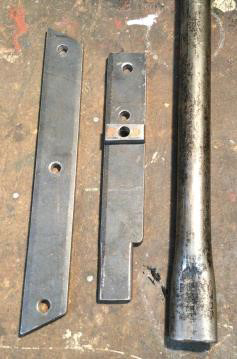During a recent chat about tapers and keyways, I advocated using
engineers blue to indicate the need to remove metal from the boss of the
flywheel to stop it from being tightened against the rear main bearing. The
removal of metal, if necessary, is also advocated in Doug Woodrow's "Austin 7
Manual". I am indebted to Glyn Llewellyn who pointed out some possible
weaknesses with this basic technique and concerns the operation of the oil
thrower.
For the oil thrower plate to do its job, it needs to be pinched
between the flywheel boss and the rear main inner journal. Two types of oil
thrower exist - the original pattern has a swaged ring around its inner diameter
and the other has three or four heavy dimples in the same area. The situation we
are trying to achieve is where the flywheel is hard on its taper with the oil
thrower pinched between the flywheel boss and the rear main. This can best be
gauged by tightening the flywheel, without the key in place, on the crankshaft
on the bench before engine assembly takes place.
However, if you don't have this luxury, i.e. you are not rebuilding
the engine, the oil thrower can be dimpled with a punch and the flywheel
tightened on its taper (having already been lapped on) without the key in place.
It should require the use of a puller to remove and the dimples on the thrower
should show signs of compression.
If this is the case, all is well. If, however, the flywheel
requires only a little effort to remove it, this indicates that the boss is hard
against the rear main. This should also be evident from flattening the oil
thrower. In this case, it will be necessary to remove some metal from the boss
to achieve the correct clearance which still pinches the oil thrower but does
not make it solid against the rear main bearing.
Finally, put the flywheel back with the key in place and make sure
it tightens to the same place. I must stress the need to check clearances on
woodruff keys - I noted three examples of damage on the Euro Tour due to poorly
fitted keys - original Austin spares are too valuable to make mistakes which
damage them or render them unusable!
 tool for holding
the flywheel when undoing or tightening the flywheel nut. It is much less risky
than putting a bar into one of the flywheel holes and resting the bar on the
crankcase. The conduit handle doubles up as a handle for other tools saving
space and weight in the car.
tool for holding
the flywheel when undoing or tightening the flywheel nut. It is much less risky
than putting a bar into one of the flywheel holes and resting the bar on the
crankcase. The conduit handle doubles up as a handle for other tools saving
space and weight in the car.

